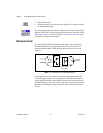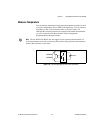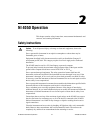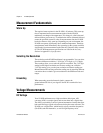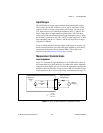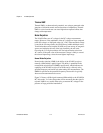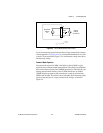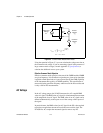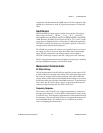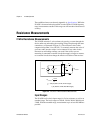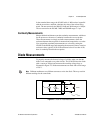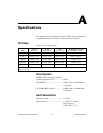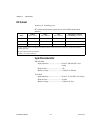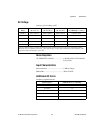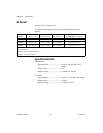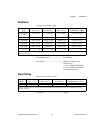Chapter 2 NI 4050 Operation
© National Instruments Corporation 2-7 NI 4050 User Manual
components and then measures the RMS value of the AC component. This
method lets you measure a small AC signal in the presence of a large DC
offset.
Input Ranges
The NI 4050 has five input ranges available for measuring AC voltages.
These ranges are 20 mV
rms
, 200 mV
rms
, 2.0 V
rms
, 25 V
rms
, and 250 V
rms
.
The impedance in each of these ranges is a 0.068 µF capacitor followed by
1 MΩ. When the NI 4050 is powered off, the 250 V, 25 V, and 2 V input
ranges have a 0.068 µF capacitor, followed by a 1 MΩ input impedance.
The 200 mV and 20 mV ranges have a 0.068 µF capacitor, followed by
an approximate 100 kΩ input impedance.
The NI 4050 can measure AC voltages to its specified accuracy as long as
the voltage is at least 10% and no more than 100% of the selected input
range. The DC component in any of these ranges can be as high as
250 VDC. Each range, except for the 250 V range, has a 10% overrange.
The AC voltage measurement accuracy depends on many factors, including
the signal amplitude, frequency, and waveform shape.
Measurement Considerations
AC Offset Voltage
The AC measurements of the NI 4050 are specified over the range of 10%
to 100% of the full-scale input range. Below 10% of the input range, errors
due to the AC voltage offset become significant. This offset, unlike DC
voltage offsets, cannot simply be subtracted from the readings or zeroed out
because the offset gets converted in the RMS conversion. To minimize the
errors due to the AC offset voltage, choose an input range that keeps the
measured voltage between 10% and 100% of full scale.
Frequency Response
The accuracy of the NI 4050’s AC voltage measurements is a function of
the input signal frequency. Your NI 4050 is calibrated at the factory using
a 1 kHz sine wave. Your frequency-dependent error will be minimal around
this frequency. The error will then increase as you approach the upper and
lower bandwidth limits. This additional error is added to the accuracy
errors in computing the absolute error.



